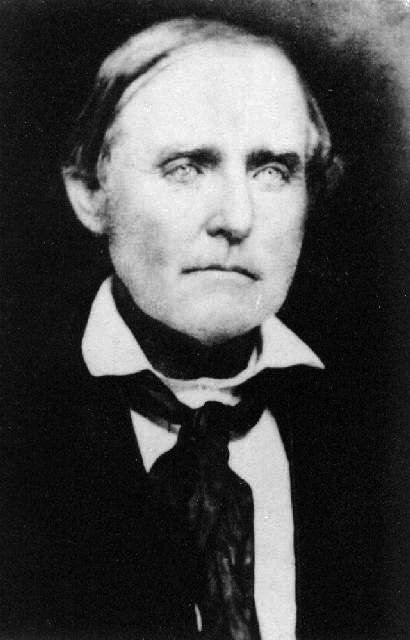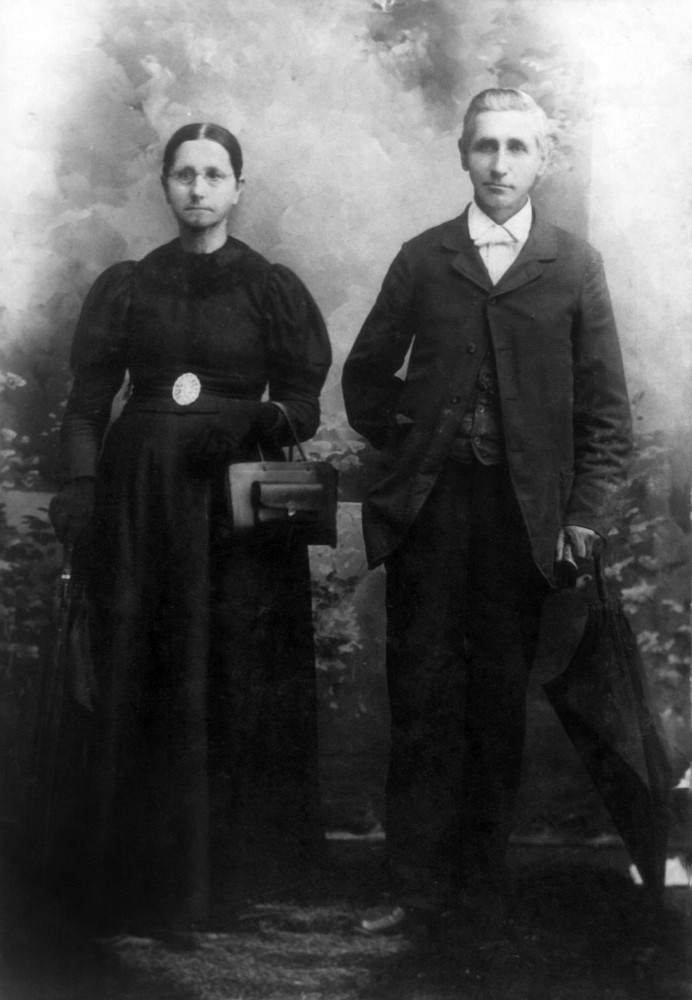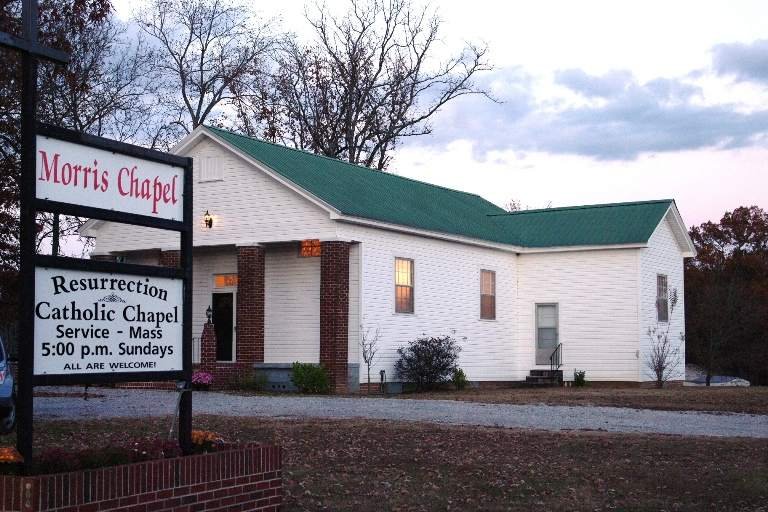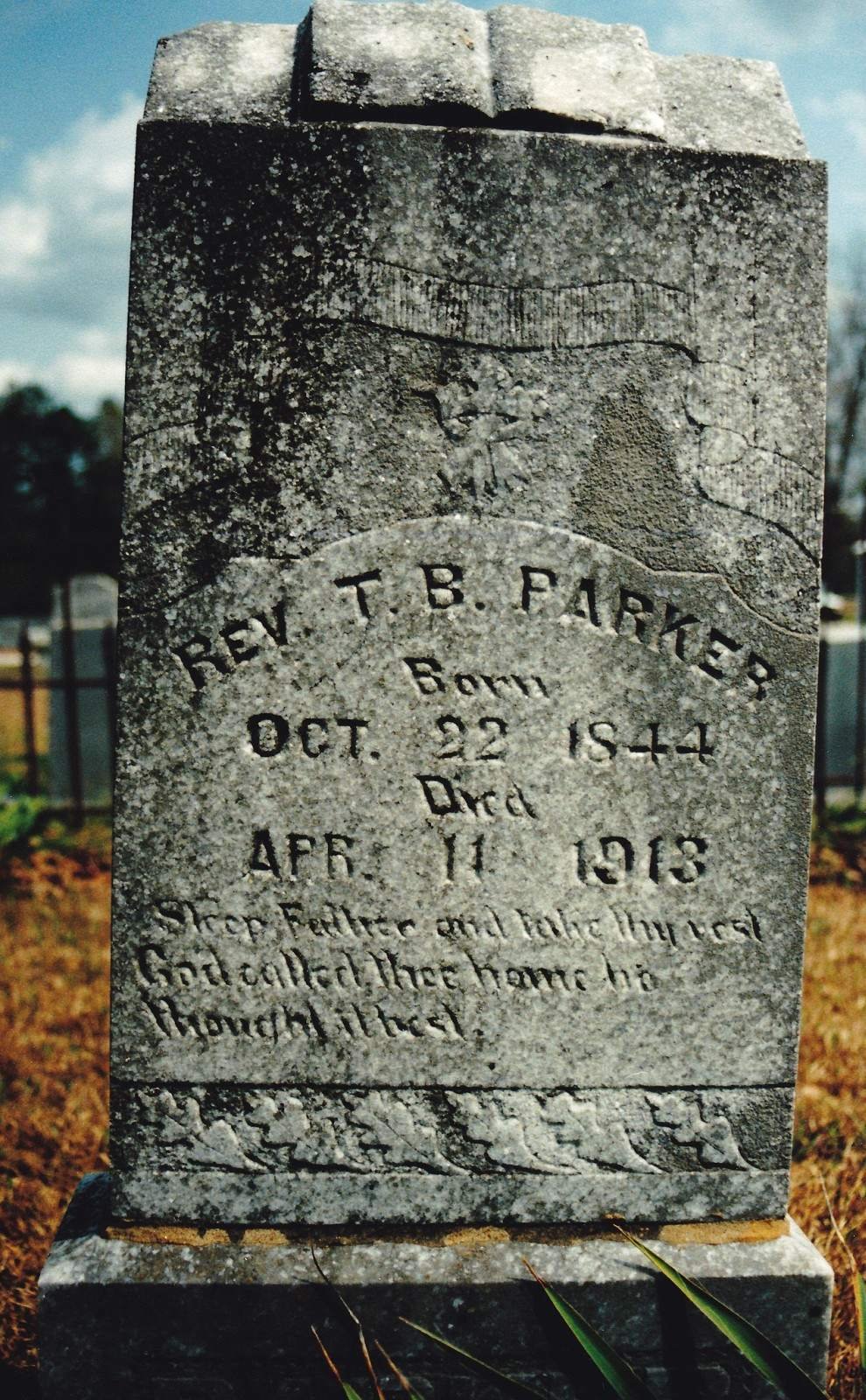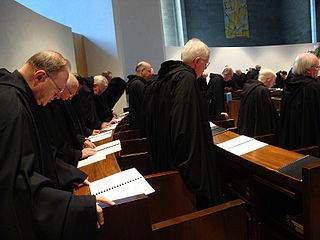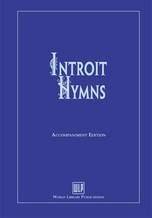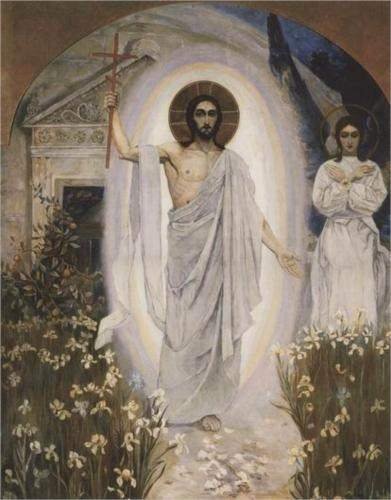
Resurrection (c. 1892), by Mikhail Nesterov. (WikiPaintings.org)
As I’ve relocated, I have lamented most of all leaving behind my mother parish, the one that gave birth to me as a Catholic and nourished me as a neophyte. It is not easy for me to make friends, but at Saint John’s I found such love and welcome and hospitality and cultivated several friendships that I will always cherish.
The parish here in my hometown is much larger and rather overwhelming. In the year I’ve been occasionally hearing Mass there, in times I’ve come home to visit, I have yet to make a new and real connection. This, I know, is partially my own fault, for not stepping out of my shell and introducing myself; but I just don’t do well in crowds.
I have dreaded the loneliness and the struggle to make friends and find a place here. But I should have remembered that God has always taken care of me, every step of my way. Though I tend to be a loner, I have never been alone. He has always provided, placing just the right people in my life at just the right time. And He has done so again — in a most prodigious and unexpected way, as if to affirm that every step of my road so far has been His, and to remind me that He continues to order the road ahead. Though it may appear dark and unknown, He will always provide a lamp for my feet and a light for my path (Psalm 119:105).
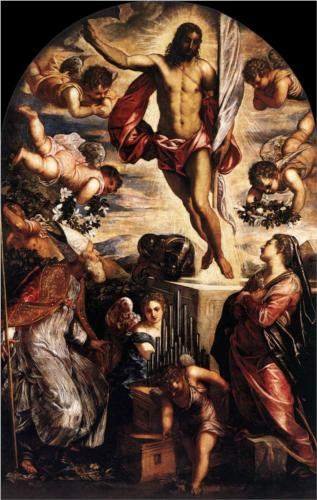
The Resurrection of Christ (1565), by Tintoretto. (WikiPaintings.org)
My first week at home was a struggle. Saturday I went Christmas shopping with my family, and missed the scheduled time for Reconciliation in the parish at home. I felt I desperately needed to go, and feared going another week without His Eucharistic presence. I was browsing MassTimes.org (a very handy website) and found a listing both of Mass times and Confession for parishes in my area. And then, my eyes lit on something unexpectedly familiar.
I have known for a while that there was a small mission parish in Lawrence County, Alabama, the neighboring county to mine, the root from which some dozen of my family lines sprang, and also (not entirely by coincidence) the county on which I’m focusing my thesis research. The last I heard, the Catholic mission in Lawrence County was meeting in Moulton, the county seat, and did not have a permanent church building or a priest. That, as it turns out, was old information. No longer a mission, they still do not have a priest, and rely on visiting priests from all around the diocese to celebrate Mass on Sunday evenings. They have since inhabited the building of an older church that had disbanded, a very old and storied church — among the oldest churches in Lawrence County, that gives its name to the surrounding community: Morris Chapel.
My eyes went wide. Morris Chapel, once a Methodist Episcopal church, is also the church where a number of my ancestors were members. My great-great-great-great-grandfather, Dr. William Alldredge, and his family were, I believe, members there; and my great-great-great-grandfather, Rev. Thomas Benton Parker, was at one time pastor of the church.
Dr. William Alldredge is one of my more illustrious ancestors (in my own family, anyway). He was among the earliest settlers of North Alabama, coming down the river from Tennessee with his father in 1816. During the 1850s, he traveled to New York to attend medical school, and returning home, he settled in Lawrence County as a country doctor. Dr. William was also a staunch Methodist, of whom the story is told that once while engaged in a heated and lengthy argument with a Baptist friend on the issue of predestination, he struck the friend with his riding crop, arguing, “I couldn’t help it. It was predestined.”
Thomas Benton Parker was a longtime and well-known Methodist circuit rider and preacher in his day. I do not know a lot about his personality, don’t have any letters from him or stories about him, or any sermons that he preached (though some of these might exist). But I know that he must have been a good and faithful man and an inspiring preacher, because he was the father, father-in-law, or grandfather of some half-dozen Methodist ministers after him — including a young William Warren Aldridge, Dr. William’s grandson and my great-great-grandfather, who was saved and called to preach as a member of Thomas Benton’s flock, and married Tom’s daughter.
And Thomas Benton Parker lies buried there in the cemetery at Morris Chapel — which is what especially struck me in learning that a Catholic church now occupied the site.
I was elated by my discovery — and relieved by the fact that the church offered Confession before Sunday evening Mass. It being only a few miles away, I resolved to attend, for the sake of Reconciliation, for curiosity, and to share my connection.
I found much more connection than I expected: an intimate, personal atmosphere in which I truly felt communion with the people around me and with the Lord. The parishioners — of whom there were only a couple dozen on this stormy night — were gracious, kind, and hospitable, more than any church I’ve ever been a part of. They immediately embraced me as a member of the family. Rick Chenault, the church director, in the final stages of entering the permanent diaconate, warmly welcomed me, and invited me to stay for a meeting of the Society of St. Vincent de Paul: this parish, though small, gives abundantly to do God’s work of caring for the poor, such that even other churches in the area send their cases to them. Everyone I met there heartily introduced themselves and treated me as a brother. And to my surprise, I already knew several of them, from school and work years ago. I had the distinct feeling that I was home.
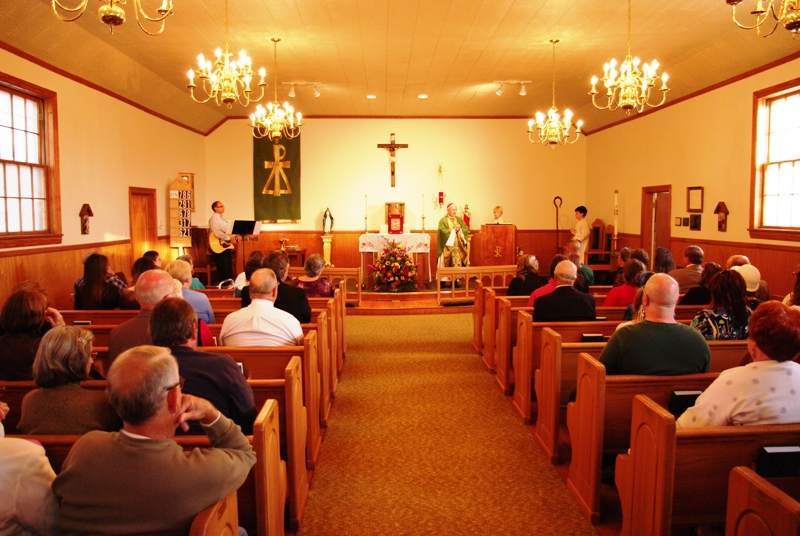
They have made some additions since this photo was taken, but you can still tell it was once a country Methodist church. Also, it's not easy to retrofit Methodist pews with kneelers.
Resurrection Chapel was founded in 1992 by Glenmary Home Missioners, a Catholic society dedicated to reaching and serving the spiritual needs of the Catholic faithful in rural areas across America, and to spreading the Gospel of Christ and the Catholic faith into new areas. Currently, all of their missions are in the rural South, in traditionally evangelical, but today heavily unchurched, areas. Now in their own church building — at Morris Chapel — Resurrection Chapel is a growing and dynamic parish, full of love and life and faith. (I can attest to this even though I was there on such a stormy, messy night.)
I was surprised and again elated to learn that the first Catholic Church in North Alabama, in what would only in 1969 become the Diocese of Birmingham (that’s /ˈbɜrmɪŋhæm/, or bur´•ming•ham, for you Brits), was established in Moulton in Lawrence County in 1835 by Rev. Peter Mauvernay, to serve the local community of Irish immigrants. It lasted only a few years, until Fr. Mauvernay was called away to become the president of Spring Hill College in Mobile. Now, so many years later, we are striving to be a Catholic presence in such a heavily Protestant region.
My dad quipped that T.B. Parker would turn in his grave if he knew that Catholics had now taken hold of his church — and that might have been the case in his earthly life. But I like to believe that Tom, now living with Christ, has discovered the truth of Christ’s Church, and was instrumental in bringing Resurrection to Morris Chapel, and bringing me there, too.
It is sad that the Methodist congregation of so many years has passed away; but the labors of the Methodists are a seed that has fallen to the ground and borne good fruit here. Resurrection is a more than apt name. Resurrection Chapel is a light in the darkness — both to the lost of Lawrence County, and to me.
It’s been a good while since I’ve believed in mere coincidences. And here are too many to stack up: that I would be longing and praying for a Catholic family in my new home; that Resurrection Chapel would be longing and praying for a permanent church home themselves; and that our needs would coincide, and we would find each other on the very ground my ancestors trod and laid down their dust. I am still overwhelmed and amazed by God’s providence — truly a home for the lonely (Psalm 68:6, NASB), and another signpost in the road.

